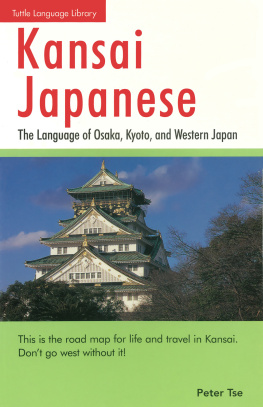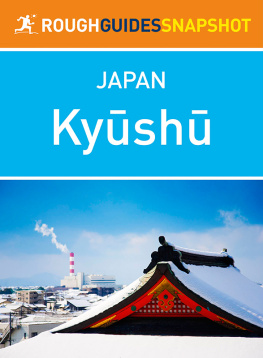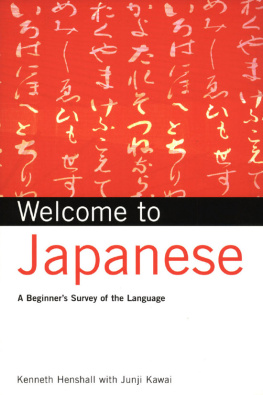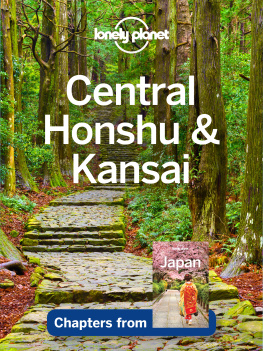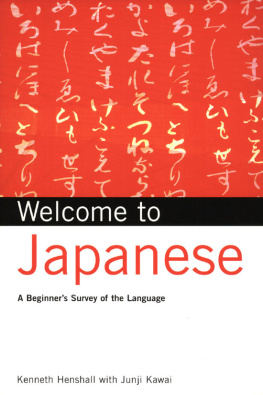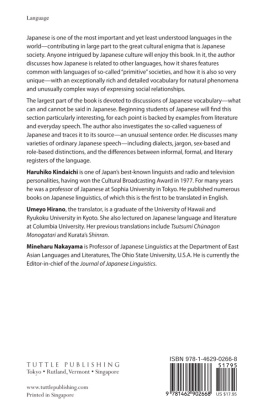ACKNOWLEDGMENTS I studied Western Japanese for several years without the help of a decent book in English on how people actually speak in Western Japan. If this book succeeds in filling that gap, it is only because many friends took the time to explain and speak Western Japanese to me. The ones who deserve most thanks are the ones who thought up and then checked the example sentences in this book. Special thanks go to Yae Kunida, Seigo Nakazawa, Yoshio Kurokawa, Shizuko Nakazawa, Noriko Marshall, Junko Omura, and my teacher Sakiko Ogo. MARTINS POCKET DICTIONARY by Samuel E. Martin This is a boon for those of us who may speak Japanese but never properly learned to read or write kanji.
Donald Richie, The Japan Times THE MODERN READERS JAPANESE-ENGLISH CHARACTER DICTIONARY (2nd Revised Edition) by Andrew N. Nelson This new compilation offers many advantages: a larger number of characters ..., more readings still in current use ..., and a greatly expanded listing of compounds ... Harvard Journal of Asiatic Studies A REFERENCE GRAMMAR OF JAPANESE by Samuel E. Martin This grammar ...is by far the most comprehensive reference grammar of Japanese in the English language (and perhaps in any language). Journal of Linguistics SPEAK JAPANESE TODAY by Takeo Kamiya An ideal text for busy people who want to learn Japanese quickly. Hiroo Japanese Center
A N I NTRODUCTION TO K ANSAI J APANESE The purpose of this book is to give you an in-depth and fun account of conversational Western Japanese.
Hundreds of expressions are given first in Western Japanese, followed by Eastern Japanese and then English. Although this book is written primarily as a guide to Western Japanese, it can also be used to learn informal Japanese as spoken in Tky, since all expressions are given in both Eastern and Western Japanese.
A W ORD A BOUT R EGIONAL N AMES In this book, the term Western Japan describes the area of Honsh that is west of Nagoya. The Kinki district is an official geographical division that covers the prefectures of Shiga, Mie, Nara, Kyto, Wakayama, saka, and Hygo. Kansai (literally, west of the border) is more of a cultural and historical term loosely used to describe the core area around Kbe, saka, and Kyto. Chgoku refers to the most western part of Honsh, where the cities Okayama, Hiroshima, and Shimonoseki are found.
The heart of Eastern Japan is Tky. The term Kant (east of the border) is used to describe the greater Tky region the way Kansai is used to describe the greater saka region.
W ESTERN J APANESE: A S HORT B ACKGROUND Western Japan has the longest history of all of Japans regions. Kinki and eastern Kysh are believed to be the areas of the country earliest settled by the Yamato people, ancestors of the present-day Japanese. The name Chgoku, meaning central country, shows that this region was once the center of ancient Japan. Kinki, moreover, was the capital region for over a thousand years, first with Nara from 600 to 794, and then with Kyto from 794 to 1868.
Eastern Japanese became the national standard for modern Japan primarily because Tky, then called Edo, was made the nations capital in 1868. In fact, it seems that standard Japanese, or hyjungo, was to some extent concocted from uptown Tokyo and other dialects during the Meiji era to deal with the huge numbers of immigrants swarming into Tky from all over Japan speaking mutually unintelligible dialects. If by historical chance Western Japanese failed to become the modern standard for all of Japan, it still must be regarded as the standard language of western Honsh. Although hyjungo has affected spoken Western Japanese in recent years thanks to mass communications and standardized schooling, Western Japanese will never be replaced by hyjungo in Western Japan. Western Japanese has become the informal language of Western Japan, with hyjungo reserved for formal occasions, news broadcasts, and the like. There are many similar but distinct dialects within Western Japan itself.
Theres the crass sounding Bansh-ben spoken around Himeji on toward Okayama. Theres the tough sounding saka-ben, and theres perhaps the most elegant sounding dialect in all Japan, refined Kyto-ben. And this is just to name a few. Each dialect has its own special turns of phrase as well as unique slang and vocabulary. However, all western Honsh dialects are sufficiently alike to justify talking about a monolithic Western Japanese dialect. In this book emphasis is placed on the standard Western Japanese spoken by people in the central Kinki region.
However, some attention is also paid to other versions of the dialect. There are short sections that focus on Hiroshima Japanese, polite Kyto usage, and Naniwa kotoba, a certain style of saka Japanese spoken primarily by older people nowadays, but often heard on TV and radio in saka. These chapters should help listening skills considerably.
A BOUT T HE F ORMAT Throughout this book, Western Japanese is contrasted with Eastern Japanese, which is the language of Tky and surrounding areas. Eastern Japanese is not the same as hyjungo, or standard Japanese, which is an ideal version of the language not flawlessly spoken by anyone except maybe newscasters and other professional talkers. Throughout this book, words and phrases given in Western Japanese are followed by the Eastern Japanese equivalent in meaning and tone.
For instance, saka slang expressions are given in Tokyo slang, not perfect hyjungo, in order to preserve the right tone. An attempt is made to capture approximately the same tone in the English translations as well. Each word or phrase is given first in Western Japanese (w), then in Eastern Japanese (e), and then in English. For example: w: A: Watashi Hawai ni iku tsumori ya. B: Honma ni? e: A: Watashi (wa) Hawai ni iku tsumori desu. B: Honto ni? A: I plan to go to Hawaii.
B: Really? Most words and phrases in this book will be understood throughout Western japan. However, in some cases a word will be followed by the regions name, (Hiroshima) or (saka) for example, indicating that the word or phrase used is particular to that region.
P RONUNCIATION The intonation of Western Japanese is said to be opposite that of Eastern Japanese. Whereas its aME in Western Japanese, its Ame in Eastern Japanese. Both mean rain. But if you use Tokyo intonation and say Ame in saka it will mean candy, not rain.
Similarly, there are characteristic pitch patterns within a sentence that set Western Japanese apart from most types of Eastern Japanese. For example, whereas its WATASHI WA AMERIKA-jin deSU in saka, its Watashi WA aMErika-jin DEsu in Tky. In addition, there is a relative lack of crisp double consonants, such as tt or kk, in Western Japanese. Although as immediately apparent to Japanese ears as an English accent is to American ears, the difference in intonation between Western and Eastern Japanese is generally too subtle for English speakers to hear or imitate without having lived in Japan for a period of time. Unless you are a linguistic genius or under the age of six, you will probably end up speaking Japanese with a foreign accent anyway, so this book leaves the differences in Western Japanese intonation aside and concentrates on the differences in wording.
M ENS AND W OMENS K ANSAI T ALK Men and women tend to speak more alike in Western Japan than they do in Kant.
M ENS AND W OMENS K ANSAI T ALK Men and women tend to speak more alike in Western Japan than they do in Kant.
For example, the particle na will generally be replaced by ne in womens speech in Eastern Japan. However, in Western Japan it is not at all uncommon to hear women say na, especially when talking informally. Similarly, the particle wa used for feminine emphasis in Eastern Japanese is often used by men in Western Japan. It is common for men to say Hay ikana akan wa (I have to go right away) in Western Japan, with the wa lending emphasis, not femininity, to the sentence. Although most words and phrases in this book can be used by either sex, women tend to avoid particularly rough or vulgar sounding talk, and men tend to avoid effeminate sounding talk. The and symbols are used to point out those words and phrases that should not be used by the opposite sex.
Next page
